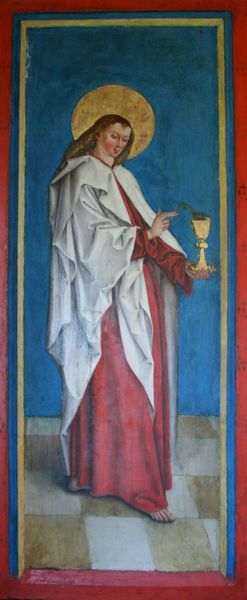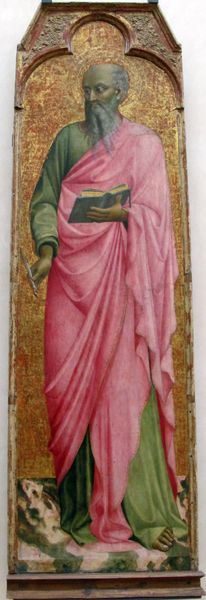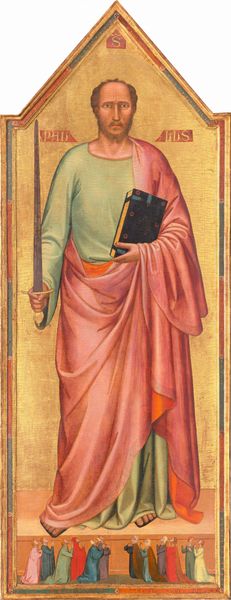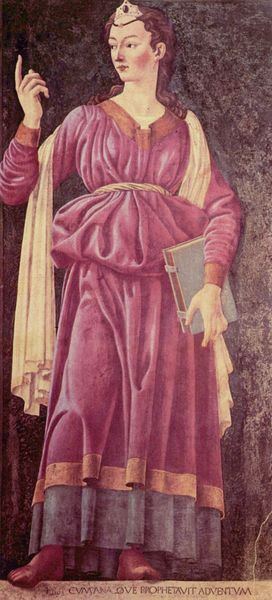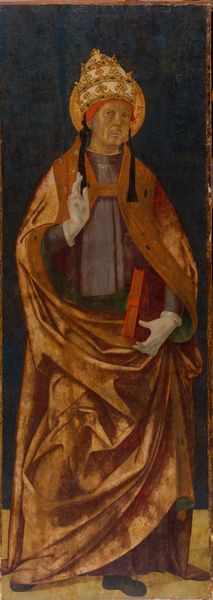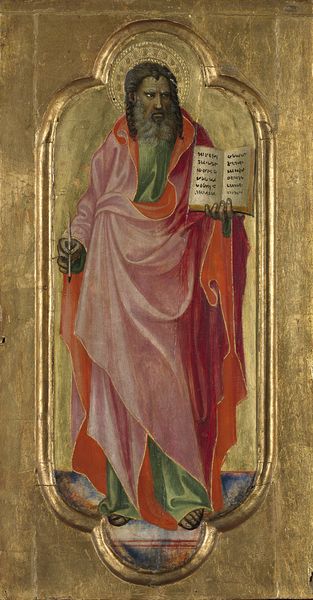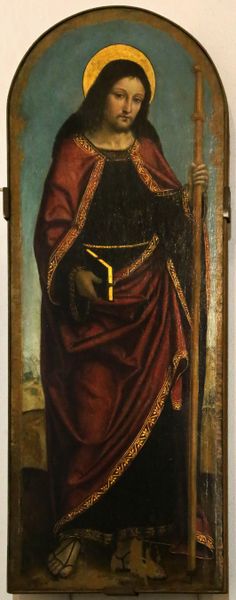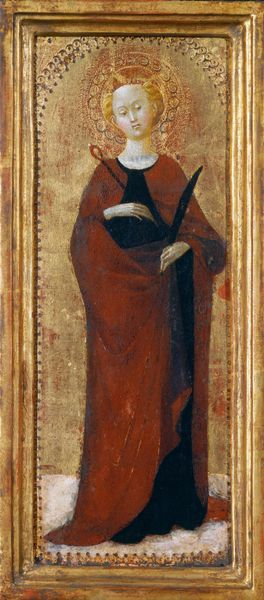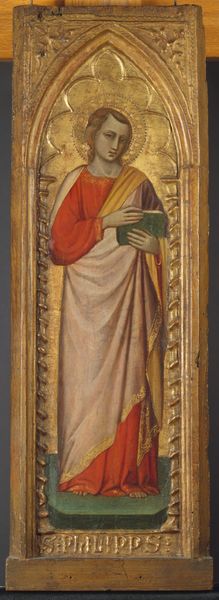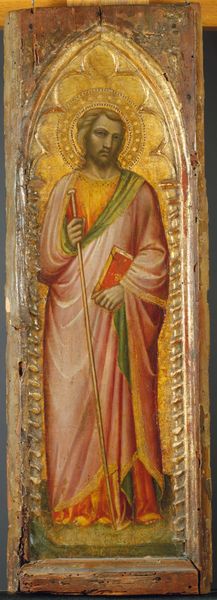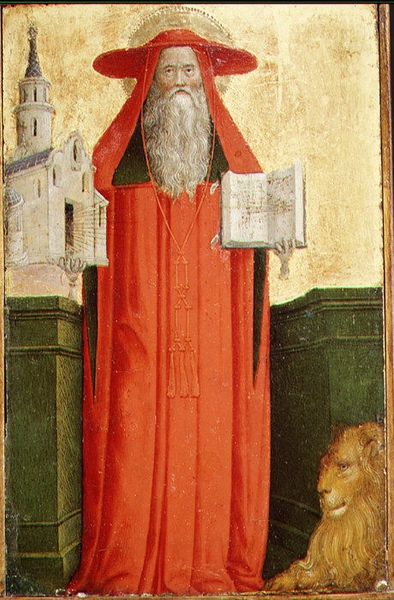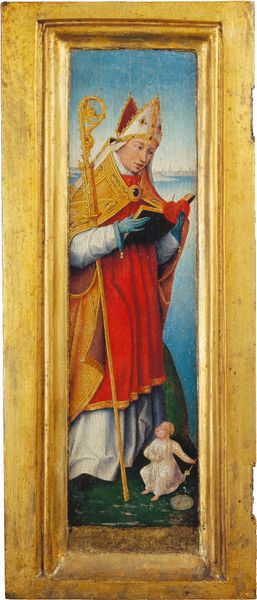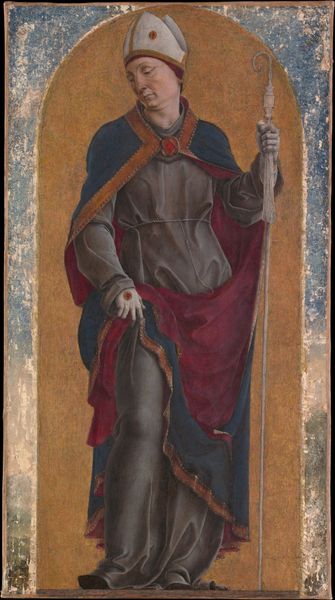
oil-paint
#
portrait
#
oil-paint
#
mannerism
#
figuration
#
oil painting
#
history-painting
#
northern-renaissance
#
christ
Copyright: Public domain
Editor: Here we have what seems to be an oil painting of John the Baptist by Bernhard Strigel. The figure's elongated form and melancholic expression create a rather somber mood. What do you see in this piece that might go beyond the initial impression? Curator: Looking beyond the surface, I'm drawn to the intersection of religious iconography and the social anxieties of the period, likely the Northern Renaissance. Note the lamb, a symbol of Christ's sacrifice. But consider how the representation of holiness interacts with, say, prevailing ideas about piety, suffering, and even social control. How does the visual language contribute to our understanding of historical power dynamics? Editor: Social control, that’s a fascinating point. It's not immediately obvious, but the solemn expression could reflect the weight of societal expectations imposed by the church. Curator: Precisely. And the choice of John the Baptist, a figure known for challenging authority, complicates the narrative. Could this be a subtle commentary on resistance, perhaps echoing burgeoning humanist ideas about individual agency against institutions? Does this challenge of power transcend beyond the church and into everyday life? Editor: That's definitely giving me a different perspective! I was stuck on just the religious symbolism. Now I'm seeing it as a statement on societal pressure. Curator: Art is rarely created in a vacuum. Exploring the sociopolitical background, particularly prevailing philosophical viewpoints and contemporary cultural norms is essential for an intersectional understanding of historical works. How do the lives of regular people shape what artists put on their canvases? Editor: That's something I’ll certainly be looking for from now on!
Comments
No comments
Be the first to comment and join the conversation on the ultimate creative platform.
